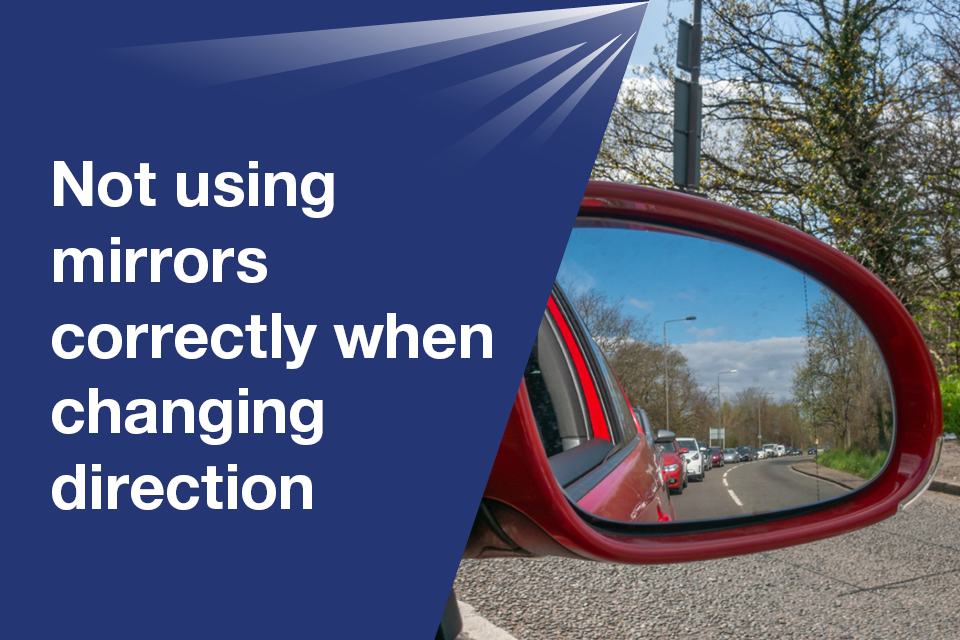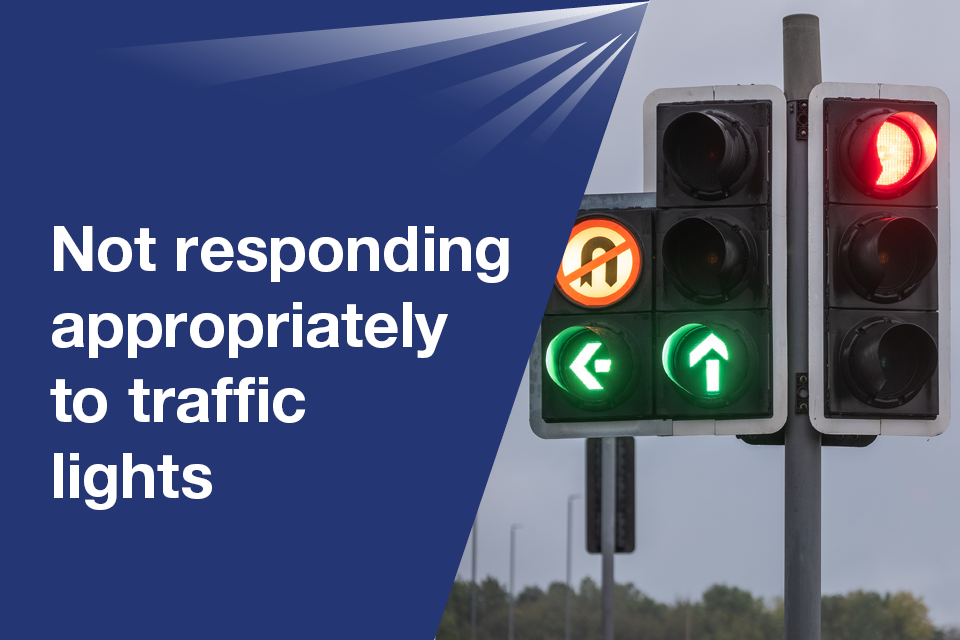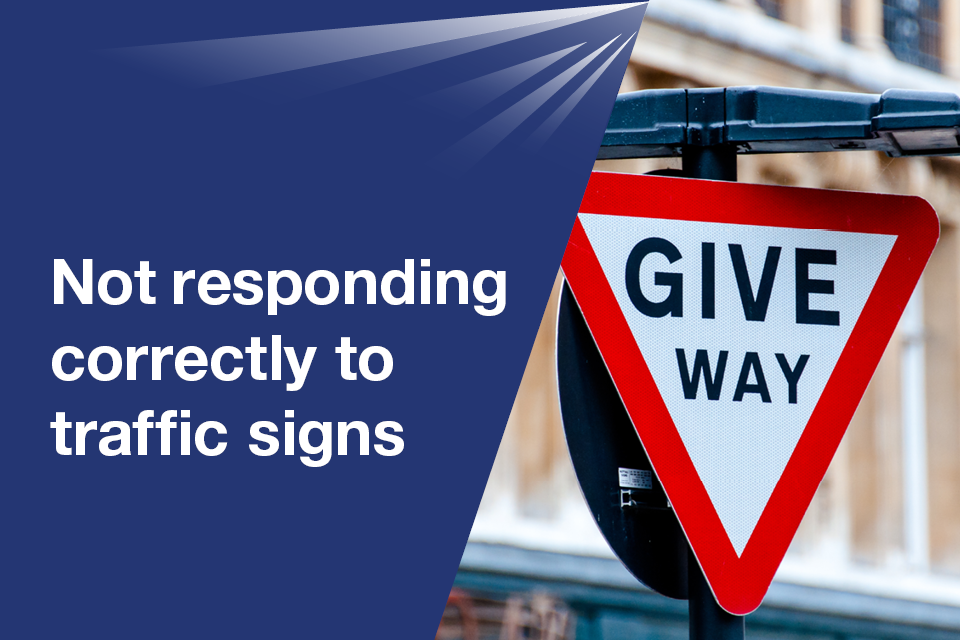Passing the driving test in Great Britain requires good driving skills, but many people fail due to common mistakes. In this guide, we will discuss the top 10 reasons people fail the car driving test in Great Britain, based on data from April 2019 to March 2020 which shows a pass rate of only 45.9%. By learning about these mistakes, you can avoid them and increase your chances of passing the driving test.
How to use this guide
This guide is a useful resource for those who want to pass the driving test. You can use it with your driving instructor and supervising driver to practice your skills. You can also keep a record of your driving lessons and private driving practice with family or friends, so you can track your progress.
1. Not making effective observations at junctions
You must:
- make effective observations before moving into a new road
- make sure it is safe before proceeding
Any mistakes you make in this area will be counted under the ‘Junctions – Observations’ fault on your driving test result.
Failing to judge the speed of an approaching vehicle
When you turn either left or right from a minor road, you make observations but fail to judge the speed of the approaching vehicle. You move off, forcing the vehicle to slow significantly.
Entering a roundabout with a vehicle approaching from the right
When you approach a roundabout, there’s a vehicle approaching from the right. You still enter the roundabout, causing the vehicle approaching to slow down.
Making no effective observations at all
When you emerge from a junction, you make no effective observations at all. This causes:
- a vehicle approaching from either the left or right to do an emergency stop to avoid hitting you
- the driving examiner using the dual controls to brake
Making no observations when joining a dual carriageway from a slip road
When you’re on a slip road to join a dual carriageway, you enter the dual carriageway without making any observations, or you do not give way to the traffic on the main carriageway.
Going straight ahead at a crossroads
When you approach a crossroads, you do not recognise that it’s a junction. You emerge and cross the crossroads without making any observations to the right or left.
Looking too late
When you emerge from a junction, you look too late (either left or right) for the observations to be effective, as you’re already partly into the next road.
Repeatedly not looking left when turning left
Throughout the test, when you turn left from a minor road into a busier road, you do not make any effective observations to the left. This means you’re unaware of any parked vehicles, obstructions or other possible hazards.
Driving safety facts
Drivers failure to look properly was a factor in 37% of all reported accidents in Great Britain in 2019.
2. Not using mirrors correctly when changing direction

You must:
- make full and effective use of all the mirrors
- check the mirrors carefully before signalling, changing direction or changing speed
- use the ‘mirror – signal – manoeuvre’ routine effectively
Any mistakes you make in this area when changing direction will be counted under the ‘Mirrors – Change direction’ fault on your driving test result.
Not using mirrors when exiting a roundabout
You need to take the right-hand exit on a large multi-lane roundabout. When you move from the right-hand lane to the left-hand lane to exit the roundabout, you make no rear or passenger-side observations or mirror checks.
Causing a vehicle to slow when changing lanes on a dual carriageway
When you’re on a dual carriageway, you check your mirrors when changing lanes, but there’s a vehicle approaching in the lane you want to move into. You start to change lanes anyway, causing the approaching vehicle to slow down.
Trying to change lane on a roundabout when a vehicle is directly alongside
When you’re driving on a roundabout, you try to change lanes when there’s a vehicle directly alongside you. The driving examiner has to take control of the steering wheel to stop a collision.
Exiting a roundabout
When you exit a roundabout, you do not check your mirrors and cut across the path of a closely following vehicle to the left-hand side of the car.
3. Not having proper control of the steering

You must be able to steer the car as smoothly as possible. You must steer at the appropriate time, as steering too early or late can cause the car to hit the kerb or swing out towards another road user.
Any mistakes you make in this area will be counted under the ‘Control – Steering’ fault on your driving test result.
Repeatedly not steering enough or steering late on the approach to junctions when turning left
Throughout the test, when you turn left, you repeatedly understeer, not following the shape of the kerb. This means there’s not enough space for vehicles turning right to fit alongside your car.
Not steering enough when going around a bend
When you drive around a bend at an appropriate speed, you do not apply enough steering. This causes both passenger-side wheels to mount the pavement.
Steering late when turning right into a minor road
When you turn right into a minor road, you steer late and not enough. This causes a ‘swan neck’ effect, and you drive fully onto the wrong side of the new road to correct your position.
Repeatedly mounting the pavement when pulling up on the left
Throughout the test, when you pull up on the left-hand side of the road, you mount the pavement with both passenger-side wheels before the car returns to the road.
Steering late when moving out to pass parked vehicles
When you approach parked vehicles, you steer late and get too close to the parked vehicles.
Driving safety facts
More than 1 in 10 reported accidents in Great Britain in 2019 were caused by the driver making a poor turn or manoeuvre.
4. Incorrect positioning when turning right at junctions

You must be able to position the car as close to the centre of the road as is safe.
Any mistakes you make in this area will be counted under the ‘Junctions – Turning right’ fault on your driving test result.
Positioning in the left-hand lane when turning right at a roundabout
When you need to turn right at a roundabout, you use the left-hand lane when it’s not appropriate, and continue around the roundabout in that lane. This causes confusion to several following vehicles.
Obstructing traffic when you wait to turn right
When you want to turn right into a minor road, you position your car too far to the left while you wait for oncoming traffic to clear. This causes severe delays to the following traffic on a road where it was wide enough for the traffic to pass you on the left.
When you want to turn right at the end of the road, you incorrectly position to the left
When you reach the end of a wide road with no road markings, you position in the left of your lane when you’re actually turning right.
5. Not moving off safely

You must be able to move off safely while making the correct observations:
- from the side of the road
- on a slope or hill (gradient)
- from behind a parked vehicle, so you have to move off at an angle
Any mistakes you make in this area will be counted under the ‘Moving off – Safety’ fault on your driving test result.
Moving off from behind a parked vehicle into the path of an approaching vehicle
When you move off from behind a parked vehicle, you check your mirrors and blind spot, but still move off into the path of an approaching vehicle. This causes the vehicle to significantly slow down.
Repeatedly moving off from the side of the road with no blind spot checks
Throughout the test, you repeatedly move off from the side of the road with no blind spot checks in situations where they’re needed.
Pulling off from the right-hand side of the road, causing an oncoming vehicle to slow or stop
After the ‘pull up on the right’ exercise, you move off with either an oncoming vehicle or a closely approaching vehicle from behind. This causes the vehicle to severely slow down or stop.
Not making any rear observations when moving off following an emergency stop
After you do the emergency stop exercise, you move off without making any rear observations, having been stationary in the middle of the lane for some time.
6. Not responding appropriately to traffic lights

You must act correctly at traffic lights, checking that the road is clear before you proceed when the green light shows.
Any mistakes you make in this area will be counted under the ‘Response to signs – Traffic lights’ fault on your driving test result.
Failing to react to red traffic light
When a red light is clearly showing, you attempt to proceed through the junction.
Stopping after the first white line when there are advanced stop lines for cyclists
At a signal-controlled junction with an advanced stop line to allow cyclists to be positioned ahead of other traffic, you stop beyond the first white line in the area for cyclists.
Not progressing when you’re waiting to turn right at a junction and it’s safe to proceed
When you need to turn right at a junction, you continue to wait in the middle of the junction when the repeater light has turned red and the oncoming traffic has stopped. This causes you to completely block the junction controlled by traffic lights.
Not going ahead when a green light is showing and the junction ahead is clear
When a green light or a green filter light is clearly visible, you continue to wait at a clear junction. You make no attempt to proceed.
Going ahead when a green light is showing but the junction is not clear
When the traffic lights are green, you go ahead, even though the junction is not clear. This then means you’re then blocking the junction when the traffic lights change.
Driving safety facts
There were 1,308 reported accidents in Great Britain in 2019 caused by drivers disobeying traffic lights.
7. Poor positioning on the road during normal driving

You must be able to:
- position the car correctly for your intended route
- position the car in the middle of marked lanes
- only change lanes when necessary
Any mistakes you make in this area will be counted under the ‘Positioning – Normal driving’ fault on your driving test result.
Repeatedly driving too close to the kerb or centre of the road
Throughout the test, you repeatedly drive too close to either:
- the kerb, putting pedestrians at risk
- the centre of road, putting oncoming drivers at risk
Unnecessarily driving in the right-hand lane of a dual carriageway
When you drive on a dual carriageway, you unnecessarily drive in the right-hand lane for a considerable length of time.
Cutting across the normal road position when you go ahead at a roundabout with no lane markings
When you go ahead at a roundabout with no lane markings, you ‘straight-line’ the roundabout with no consideration for following vehicles. ‘Straight-lining’ means you drive in a straight line in the road, rather than following the bend of the roundabout.
8. Not responding correctly to traffic signs

You must be able to understand and be able to react to all traffic signs.
Any mistakes you make in this area will show as ‘Response to signals – Traffic signs’ in your result.
Going to the wrong side of a ‘keep left’ sign
You go to the wrong side of a ‘keep left’ sign in the road.
Ignoring a ‘stop’ or ‘no entry’ sign
You ignore either:
- a ‘stop’ sign by crossing the line on the road and not making sure the way ahead is clear
- a ‘no entry’ sign (these are usually at the end of a one-way road, where all traffic would be heading towards you)
Driving in a bus lane
You drive in a bus lane when a sign shows that you cannot use it at that time.
Choosing the wrong lane at a roundabout with clear signage
When you approach a roundabout, you get into the wrong lane when a sign clearly shows which lane you should go in. You then go around the roundabout in the wrong lane.
Acting late or not at all to speed limit changes
You either act far too late or not at all when a clearly visible sign shows a change of speed limit.
9. Not having control of the vehicle when moving off

You must be able to move off under control, including on a slope or hill (gradient), from behind a parked vehicle and at junctions.
Any mistakes you make in this area will be counted under the ‘Move off – Control’ fault on your driving test result.
Stalling and rolling back when trying to move off
When you move off at a green traffic light or during a hill start, you stall the car and roll back a considerable distance.
Repeatedly stalling when moving off
Throughout your test, you repeatedly stall the car when you try to move off.
Stalling repeatedly when moving off on one occasion
On one occasion during your test, when you move off you repeatedly stall because of things like being in the wrong gear or poor clutch control. This results in the driving examiner giving you guidance.
Trying to move off without selecting a gear and then rolling back
When you try to move off, you do not select a gear. This then causes the car to roll back a considerable distance.
Driving safety facts
There were 942 reported accidents in Great Britain in 2019 caused by driver error when moving off at junctions.
10. Not keeping control of the vehicle during reverse parking

You must be able to control the car accurately when you:
- parallel park at the side of the road
- reverse to park in a parking bay
Any mistakes you make in this area will be counted under the ‘Reverse park – Control’ fault on your driving test result.
Wheels ending up on the pavement at the end of a parallel park
When you complete a parallel park, either the front or back wheels (or both) on the passenger side end up on the pavement.
Too many attempts to reposition when parking
When you park in a bay or at the side of the road, you take too many attempts to either:
- position the car to park within the bay lines
- position the car close and parallel to the kerb
Losing control of the car when parking in a bay
When you park in a bay, you lose control of the car.
Ending up parking outside of the bay
When you park in a bay, your final parking position is outside of the lines of the bay.
